Long before the Netherlands was synonym with tulips, windmills, cheese markets, wooden shoes, canals of Amsterdam, masterpieces of Old Masters, Delft Blue earthenware, innovative water-management, millions of bicycles, and happy children, the Dutch were seafarers, explorers, and conquerors. This small country it’s packed with world-famous discoveries and inventions. Let’s see!
- The Microscope
Although objects resembling lenses date back 4,000 years in ancient Greek, there are claims that the microscope was invented in 1590 by Zazzharias Janssen and/or Zaccharias’ father, Hans Martens. The original prototype was magnifying between three and nine times an object’s size and it was used as a novelty.
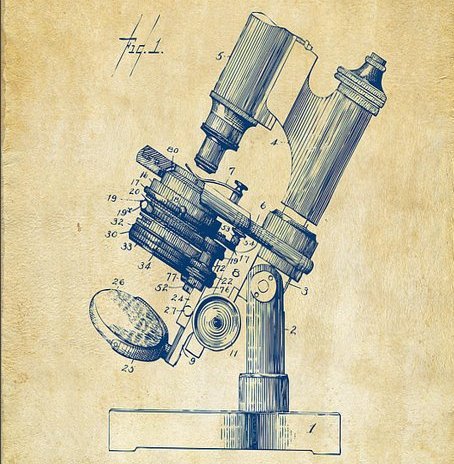
2. Cassette, CD, DVD, and Blu-Ray
It seems like all the media was born in the Netherlands. In 1963, Dutch giant Philips began with the invention of the cassette. Almost twenty years later, in 1979, they replaced the cassette with the CD, which was developed by Philips and Sony together. In 1997 the DVD followed the CD and in the meanwhile, Philips updated the format to our days Blu-Ray.
3. Bluetooth
Introduced on 7 May 1989, Bluetooth is a peer-to-peer wireless technology, originally developed by Dutch electrical engineer Jaap Haartsen and Swedish engineer Sven Mattison, working at Ericsson in Lund, Sweden. It became a global standard of short-distance wireless connection. The name “Bluetooth” was proposed in 1997 by Jim Kardach of Intel, who developed a system that would allow mobile phones to communicate with computers. At the time of this proposal, he was reading Frans G. Bengtsson’s historical novel The Long Ships about Vikings and the 10th-century Danish King Harald Bluetooth.
4. Wi-Fi
The name Wi-Fi, commercially used at least as early as August 1999, was coined by the brand-consulting firm Interbrand. The Wi-Fi Alliance had hired Interbrand to create a name that was “a little catchier than ‘IEEE 802.11b Direct Sequence’.” The name Wi-Fi has no further meaning, and was never officially a shortened form of “Wireless Fidelity”. Nevertheless, the Wi-Fi Alliance used the advertising slogan “The Standard for Wireless Fidelity” for a short time after the brand name was created, and the Wi-Fi Alliance was also called the “Wireless Fidelity Alliance Inc” in some publications. WiFi is a short name for Wireless Fidelity. Interbrand also created the Wi-Fi logo. The yin-yang Wi-Fi logo indicates the certification of a product for interoperability. The technical birthplace of Wi-Fi is The Netherlands. In 1991, NCR Corporation with AT&T Corporation invented the precursor to 802.11, intended for use in cashier systems, under the name WaveLAN. NCR’s Vic Hayes, who held the chair of IEEE 802.11 for 10 years, along with Bell Labs Engineer Bruce Tuch, approached IEEE to create a standard and were involved in designing the initial 802.11b and 802.11a standards within the IEEE. They have both been subsequently inducted into the Wi-Fi NOW Hall of Fame.
5. The Eye test
I should thank the Dutchman Herman Snellen for my good reading due to my right glasses. Snellen invented in 1862 the original eye test. A Snellen chart is an eye chart that can be used to measure visual acuity. The normal Snellen chart is printed with eleven lines of block letters. The first line consists of one very large letter, which may be one of several letters, for example, E, H, or N. Subsequent rows have increasing numbers of letters that decrease in size. A person taking the test covers one eye from 6 meters away, and reads aloud the letters of each row, beginning at the top. The smallest row that can be read accurately indicates the visual acuity in that specific eye. The symbols on an acuity chart are formally known as “optotypes”.
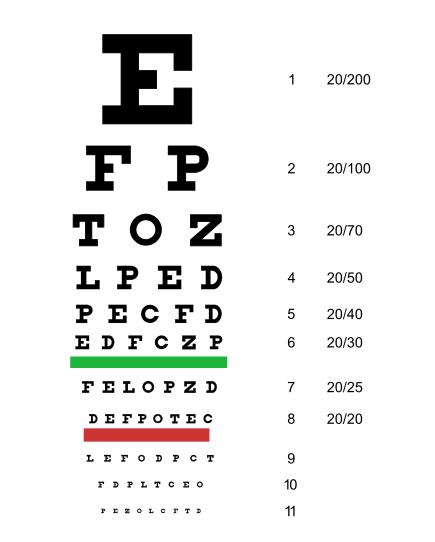
6. Orange carrots
Who would think that orange carrots were once not orange? Before the 18th century carrots from Asia were usually purple, while the carrots in Europe were either white or red. In the 16th century, some Dutch farmers from Hoorn bred the color. They cross-bred the pale yellow carrots with the red carrots. They say the Dutch Royal family, known as the House of Orange, found the orange carrots exquisite and decide to cultivate them in the Netherlands. The long orange Dutch carrot, first described in 1721, is the ancestor of the orange horn carrot (from the town of Hoorn), one of the most common types found in the supermarket today.

7. Fair Trade
In 1969, the first world shop opened its doors in the Netherlands. The initiative aimed at bringing the principles of fair trade to the retail sector by selling almost exclusively goods produced under fair trade terms in “underdeveloped regions”. The first shop was run by volunteers and was so successful that dozens of similar shops soon went into business in the Benelux countries, Germany, and other Western European countries. In 1988, two Dutch fair trade proponents invented the world’s first fair trade label. The label allowed any company to sell free trade goods and have them certified through a trusted organization.

8. Elstar apple
The Elstar apple is an apple cultivar that was first developed in the Netherlands in Elst in the 1950s by crossing Golden Delicious and Ingrid Marie apples. It quickly became popular, especially in Europe. The Elstar is a medium-sized apple whose skin is mostly red with yellow showing. The flesh is white and has a soft, crispy texture. It may be used for cooking and is especially good for making apple sauce. In general, however, it is used in desserts due to its sweet flavor.
9. First megacorporation – Dutch East India Company
The Dutch East India Company, in Dutch Verenigde Oostindische Compagnie or VOC, founded in 1602, was the world’s first multinational, joint-stock, limited liability corporation. It was the first company to issue shares of stock and what evolved into corporate bonds. The VOC was the first company to actually issue stocks and bonds through a stock exchange. VOC started as a chartered company to trade with Mughal India in the early modern period, from which 50% of textiles and 80% of silks were imported. In addition, the company traded with Indianised Southeast Asian countries when the Dutch government granted it a 21-year monopoly on the Dutch spice trade. The company is often considered by many to be the forerunner of modern corporations. The Dutch East India Company (VOC) was also a major force behind the Golden Age of Dutch exploration and discovery (the 1590s–1720s).
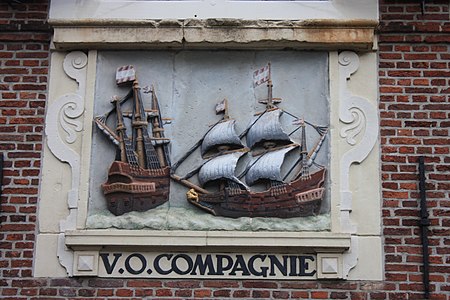
The VOC-funded exploratory voyages. during the Golden Age of Dutch/Netherlandish cartography, VOC navigators, explorers, and cartographers helped shape cartographic and geographic knowledge of the modern-day world. The VOC existed for almost 200 years. During those two centuries, the VOC sent almost a million Europeans to work in the Asia trade on 4.785 ships and netted for their efforts more than 2,5 million tons of Asian trade goods. Just to have an idea, the rest of Europe combined sent only 882.412 people from 1500 to 1795. So how rich was the VOC? Well, The VOC’s stocks pushed the company’s worth to a massive 78 million Dutch guilders, which is a pretty solid business even today, but translates to a whopping $7,9 trillion dollar worth today! That’s 7.900 billion or 79.000 million! At its peak, the VOC was worth the equivalent of Apple, Microsoft, Amazon, ExxonMobil, Berkshire Hathaway, Tencent, and Wells Fargo put together. This means that the world’s most valuable company, Apple, is worth about 11% of the peak value of the VOC. How about that, Steve Jobs? The speculative peak of the company’s prospects coincided with Tulip Mania in Holland in 1637. Widely considered the world’s first financial bubble, the history of Tulip Mania is a fantastic story in itself.
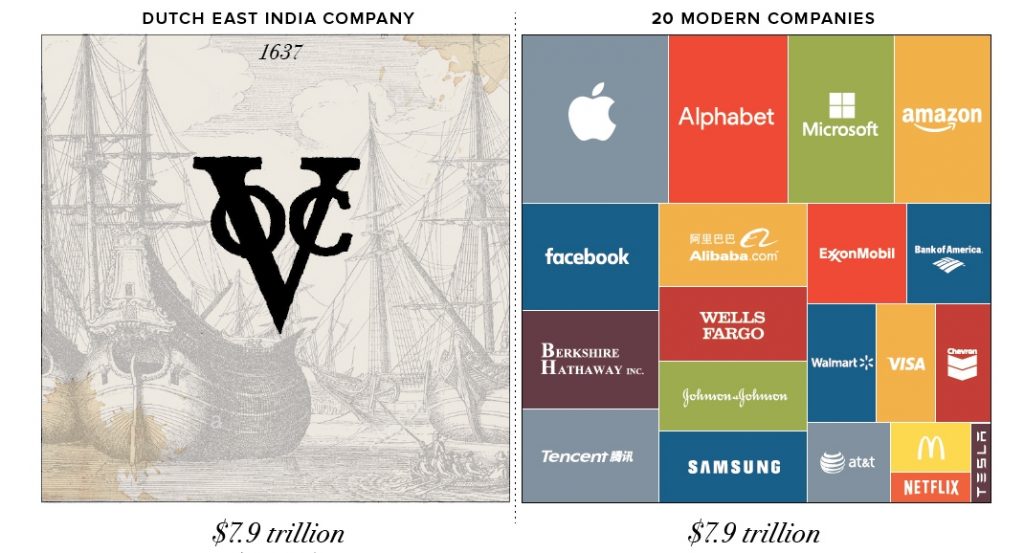
10. The first modern art market
The Dutch Republic was the birthplace of the first modern art market. The 17th century Dutch were the pioneering art marketers, successfully combining art and commerce. Until the 17th century, commissioning works of art was largely the preserve of the church, monarchs, and aristocrats. With the creation of the first large scale open art market, prosperous Dutch merchants, artisans, and civil servants bought paintings and prints in unprecedented numbers. Foreign visitors were astonished that even modest members of Dutch society such as farmers and bakers owned multiple works of art.
11. Foundations of the modern financial system
In the early 17th century, the Dutch revolutionized domestic and international finance by inventing common stock – that of the Dutch East India Company and founding a proto-central bank, the Wisselbank or Bank of Amsterdam. In 1609, the Dutch had already had a government bond market for some decades. Shortly thereafter, the Dutch Republic had in place, in one form or another, all of the key components of a modern financial system: formalized public credit, stable money, elements of a banking system, a central bank of sorts, and securities markets. The Dutch Republic went on to become that century’s leading economy.
12. Gin
The Dutch physician Franciscus Sylvius is often credited with the invention of gin in the mid 17th century. Gin is a spirit that derives its predominant flavor from juniper berries (Juniperus communis). From its earliest origins in the Middle Ages, gin has evolved over the course of a millennium from herbal medicine to an object of commerce in the spirits industry. Gin was developed on the basis of the older Jenever, and become widely popular in Great Britain when William III of Orange, leader of the Dutch Republic, occupied the British throne with his wife Mary. Today, the gin category is one of the most popular and widely distributed ranges of spirits and is represented by products of various origins, styles, and flavor profiles that all revolve around juniper as a common ingredient.
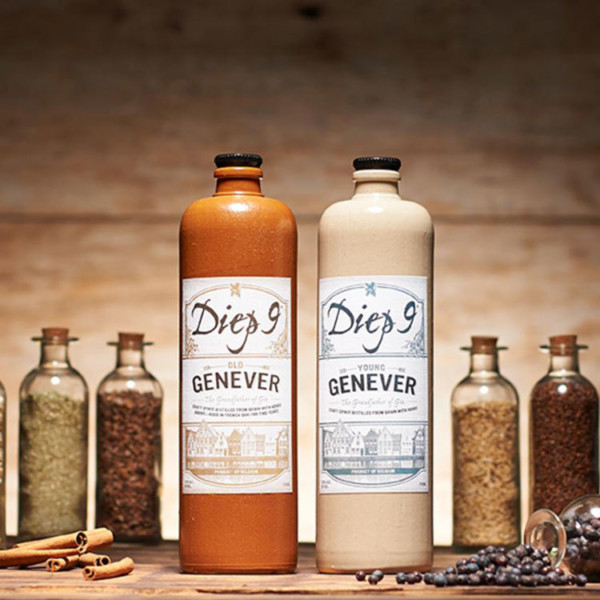
13. Cocoa powder
In 1815, Dutch chemist Coenraad van Houten introduced alkaline salts to chocolate, which reduced its bitterness. In the 1820s, Casparus van Houten, Sr. patented an inexpensive method for pressing the fat from roasted cocoa beans. He created a press to remove about half the natural fat (cacao butter) from chocolate liquor, which made chocolate both cheaper to produce and more consistent in quality. This innovation introduced the modern era of chocolate. Van Houten developed the first cocoa powder producing machine in the Netherlands. Van Houten’s machine – a hydraulic press – reduced the cocoa butter content by nearly half. This created a “cake” that could be pulverized into cocoa powder, which was to become the basis of all chocolate products. The press separated the greasy cocoa butter from cacao seeds, leaving a purer chocolate powder behind. This powder, much like the instant cocoa powder used today, was easier to stir into milk and water.

14. Pendulum clock
The pendulum clock was invented by Christian Huygens, a Dutch inventor, based on the pendulum introduced by Galileo Galilei. Although Galileo studied the pendulum as early as 1582, he never actually constructed a clock based on that design. Christiaan Huygens invented the pendulum clock in 1656 and patented it the following year. He contracted the construction of his clock designs to clockmaker Salomon Coster, who actually built the clock. A pendulum clock uses a pendulum’s arc to mark intervals of time. From their invention until about 1930, the most accurate clocks were pendulum clocks. Pendulum clocks cannot operate on vehicles or ships at sea, because the accelerations disrupt the pendulum’s motion, causing inaccuracies
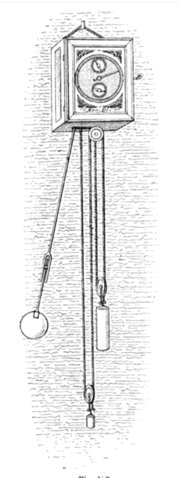
15. Mercury thermometer
Various authors have credited the invention of the thermometer to Cornelis Drebbel, Robert Fludd, Galileo Galilei or Santorio Santorio. The thermometer was not a single invention, however, but a development. What can be considered the first modern thermometer, the mercury thermometer with a standardized scale, was invented by German-Dutch scientist Daniel Gabriel Fahrenheit in 1714.
16. Fahrenheit scale
In 1724 Daniel Gabriel Fahrenheit produced a temperature scale that now (slightly adjusted) bears his name. He could do this because he manufactured thermometers, using mercury for the first time and the quality of his production could provide a finer scale and greater reproducibility, leading to its general adoption. The Fahrenheit scale was the first widely used temperature scale. By the end of the 20th century, most countries used the Celsius scale rather than the Fahrenheit scale. Fahrenheit remains the official scale for Jamaica, the Cayman Islands, Belize, the Bahamas, Palau, and the United States and associated territories.
17. Metronome
The first (mechanical) metronome was invented by Dietrich Nikolaus Winkel in Amsterdam in 1812, but named (patented) after Johann Maelzel, who took the idea and popularized it.
18. Telescope
The first historical records of a telescope appear in patents filed 1608 by the Dutch Hans Lippershey and Jacob Metius. A description of Lippershey’s instrument quickly reached Galileo Galilei, who created an improved version in 1609, with which he made the observations found in his Sidereus Nuncius of 1610.
19. Speed skating
Speed skating, which had developed in the Netherlands in the 17th century, was given a boost by the innovations in skate construction. Speed skating, or speedskating, is a competitive form of skating in which skaters race each other over a certain distance. Types of speed skating are long track speed skating, short track speed skating and marathon speed skating. In the modern Olympic Games, long-track speed skating is usually referred to as just “speed skating”, while short-track speed skating is known as “short track”.
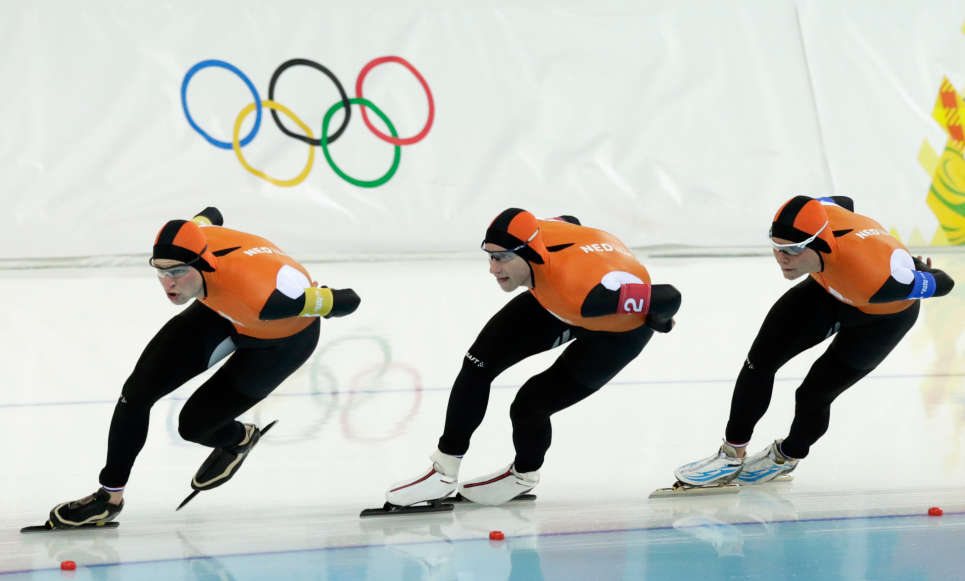
20. Thermostat
Around the 1620s, Cornelis Drebbel developed an automatic temperature control system for a furnace, motivated by his belief that base metals could be turned to gold by holding them at a precise constant temperature for long periods of time. He also used this temperature regulator in an incubator for hatching chickens.
21. The submarine
Cornelius Drebbel was the inventor of the first navigable submarine while working for the British Royal Navy. He designed and manufactured a steerable submarine with a leather-covered wooden frame. Between 1620 and 1624 Drebbel successfully built and tested two more, successively larger vessels. The third model could carry 16 passengers. This model was demonstrated to King James I and several thousand Londoners. The submarine stayed submerged for three hours and could travel from Westminster to Greenwich and back, cruising at a depth of from 3.7 to 4.6 m. This submarine was tested many times in the Thames, but never used in battle.

22. Photosynthesis
23. Founding the microbiology: Protozoa, Bacteria, Sperm cells, and Spermatozoa, Giardia
All of the above were discovered by Anton van Leeuwenhoek. Protozoa were discovered in 1674. The first bacteria were observed in 1676 using his single-lens microscope. He described the creatures he saw as small creatures. The study of bacteria is generally known as the study of microbiology; Anton van Leeuwenhoek is known as the founder of microbiology. Sperm cells were first observed by van Leeuwenhoek in 1677. Giardia is a genus of anaerobic flagellated protozoan parasites that colonize and reproduce in the small intestine. Van Leeuwenhoek first observed it in 1681 during observation of his own stool.
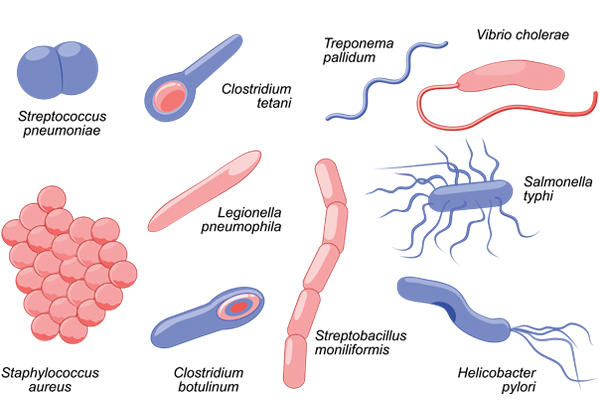
24. Discovered lots of islands
During his first visit in 1594, the Dutch explorer Willem Barents discovered the Orange Islands, at the northern extremity of Nova Zembla. * At the end of the 16th century (1598), bad weather whilst passing the Cape of Good Hope changed the route of five Dutch ships which wound up sailing to the shores of Mauritius. Under the command of Wybrand van Warwick, they anchored and named the island Prins Maurits van Nassaueiland, after Prince Maurits of the House of Nassau. The Dutch made a settlement on Mauritius for their ships passing through this sea route and had it for 20 years but eventually abandoned it. The island was taken over by the French who changed its name to Isle de France and used it, among other things, to raid on British commercial ships. That lasted up until 1810 when the British took control over the island and returned its Dutch name. * In 1642, Abel Tasman sailed from Mauritius and on 24 November, sighted Tasmania. He named Tasmania Van Diemen’s Land, after Anthony van Diemen, the Dutch East India Company’s Governor-General, who had commissioned his voyage. It was officially renamed Tasmania in honor of its first European discoverer on 1 January 1856. * In the same year, 1642, the first Europeans is known to reach New Zealand were the crew of Dutch explorer Abel Tasman who arrived in his ships Heemskerck and Zeehaen. Tasman anchored at the northern end of the South Island in Golden Bay (he named it Murderers’ Bay) in December 1642 and sailed northward to Tonga following a clash with local Māori. Tasman sketched sections of the two main islands’ west coasts. Tasman called them Staten Landt, after the States-General of the Netherlands, and that name appeared on his first maps of the country. In 1645 Dutch cartographers changed the name to Nova Zeelandia in Latin, from Nieuw Zeeland, after the Dutch province of Zeeland. It was subsequently Anglicised as New Zealand by British naval captain James Cook. * On Easter Sunday, 5 April 1722, Dutch explorer Jacob Roggeveen discovered Easter Island. Easter Island is one of the most remote inhabited islands in the world. The name Easter Island was given by Jacob Roggeveen while searching for Davis or David’s island. Roggeveen named it Paasch-Eyland (18th century Dutch for “Easter Island”). * On 13 June Roggeveen discovered the islands of Samoa as well.

